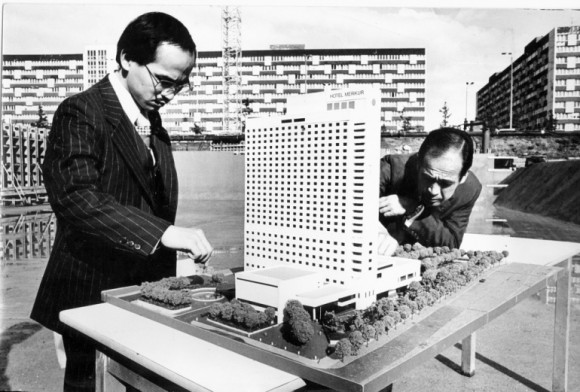Japan’s post-war rise is often mentioned in the same breath with Germany’s spectacular economic miracle – the “Wirtschaftswunder”. For someone born on the other side of the wall in East Berlin, it is interesting to read about the less-documented relationship between economic superstar Japan and socialist East Germany during the decades of the cold war. The first installment in a set of some anecdotes is about Kajima Corporation’s export of Japanese construction practices to Berlin, Leipzig and Dresden.
Hotel Merkur Leipzig model presentation by Kajima Corporation in 1978







